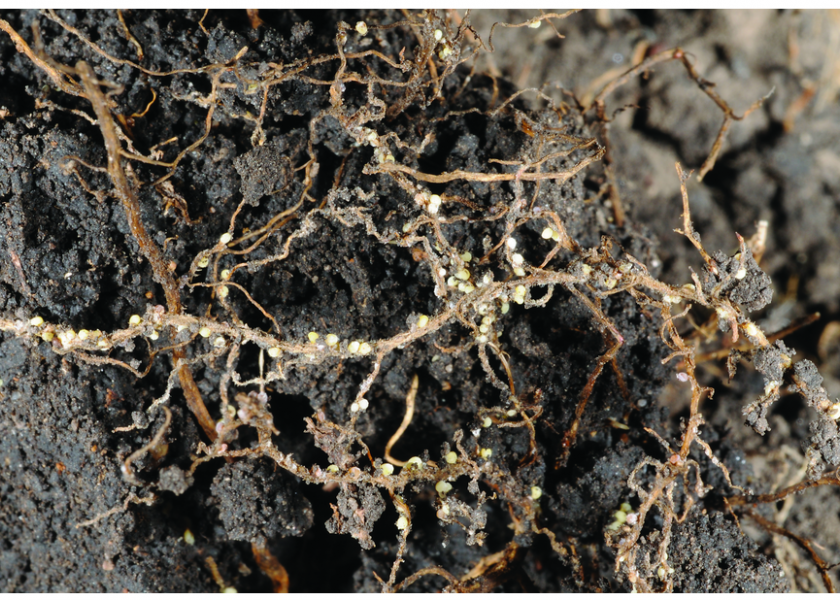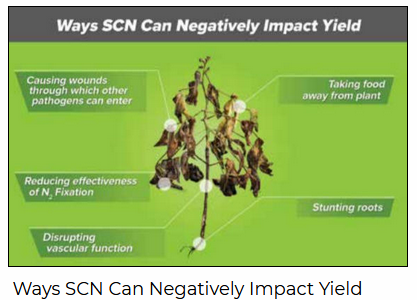Get Ahead Of 2021 SCN Problems: Know Your Numbers

Soybean Cyst Nematode (SCN) is the single most damaging pest in U.S. soybeans. Losses total around $1.5 billion – yes, billion – annually.
At the individual farm level, severe cases of SCN can destroy 80% of a soybean field’s yield potential. Even where symptoms of infection aren’t readily visible, SCN often still saps yields by 15% to 30%, according to University of Illinois research.
But you can do something now to minimize the impact SCN has on your 2021 crop, says Greg Tylka, Director of the Iowa Soybean Research Center for Iowa State University.
His recommendation: Know your numbers by testing fields to verify SCN levels. “Get out and pull some field samples or get your co-op or seed agronomist to come test your fields, so you know what you’re dealing with,” he told AgriTalk Host, Chip Flory, on Monday.
“Right now with the mild weather and mild temperatures, you can get some exercise and do some checks that could make you more money next year,” Tylka adds.
Knowing where SCN thrives is key to minimizing its impact—and why it’s critical to pull soil samples by management zone. Top of the list are sandy soils, high pH fields and low spots.
Along with yield losses from SCN alone, it and sudden death syndrome (SDS) often go hand-in-hand. SCN injures the plant early, which can leave it more susceptible for the Fusarium pathogen in SDS.
The Soybean Coalition, which is funded by the Soybean Checkoff, has a variety of farmer-focused resource materials that can help you address SCN. Learn more at https://www.thescncoalition.com/
The SCN Coalition and experts recommend the following best management practices for all fields:
• Use genetics with resistance, including PI 88788, though Tylka says those genetics are up to 40% less effective than they were a decade ago.
• Consider using seed treatments on top of resistant soybean varieties for additional protection against SCN.
• Crop rotation is important. Corn and wheat are non-host crops and can help decrease populations. It’s still necessary to test fields after corn and before soybeans to verify SCN levels.
SCN tests cost $1 to $2 per acre, but some state soybean checkoff programs offer cost assistance.
Get Tylka’s complete recommendations for addressing SCN here:








